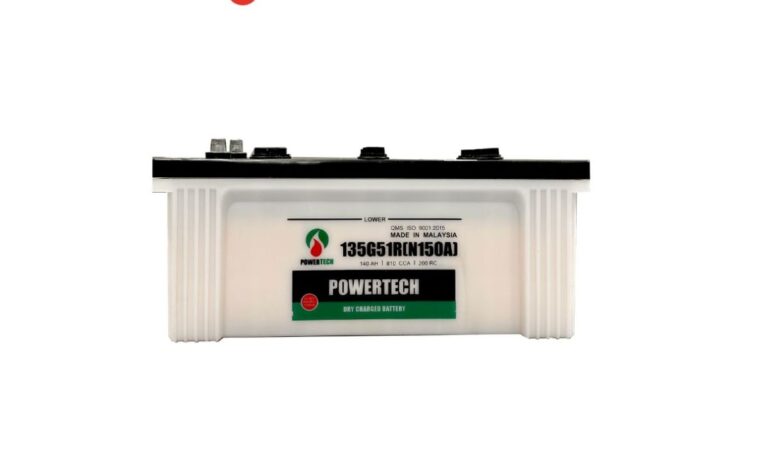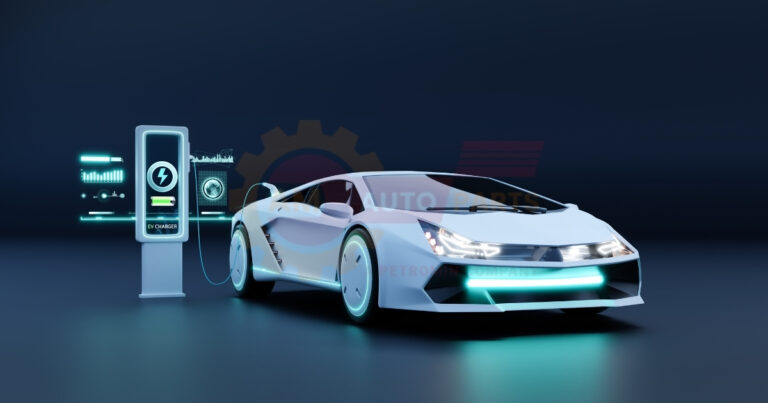What Makes Car Battery Go Flat: Causes and Prevention
Car batteries are the unsung heroes of our vehicles, silently powering our journeys until one day, they unexpectedly fail. Understanding what makes car batteries go flat and how this process occurs is crucial for every driver. This comprehensive guide will explore the various factors that contribute to battery drainage and provide valuable insights on how to prevent and address this common automotive issue.
Common Reasons for Car Battery Drainage
Leaving Headlights On
One of the most frequent culprits behind a flat car battery is simply forgetting to turn off the headlights. Modern vehicles often have automatic headlight systems, but older models require manual operation. Leaving headlights on overnight can quickly drain a battery, leaving you stranded in the morning.
When headlights are left on, they continuously draw power from the battery without the engine running to recharge it. This constant drain can deplete the battery’s charge within a few hours, depending on its capacity and condition.
To prevent this issue:
- Double-check your lights before leaving the vehicle
- Consider installing an automatic headlight system
- Use a headlight reminder device if your car doesn’t have one built-in
Parasitic Draw from Electrical Components
Even when your car is turned off, certain electrical components continue to draw small amounts of power. This is known as parasitic draw and is normal to a certain extent. However, faulty components or wiring issues can lead to excessive parasitic draw, causing the battery to go flat over time.
Common sources of parasitic draw include:
- Clock and radio presets
- Security systems
- On-board computers
- Faulty alternators or voltage regulators
To identify and address parasitic draw:
- Have a professional perform a parasitic draw test
- Check for any aftermarket accessories that may be improperly installed
- Ensure all doors and trunks are properly closed to avoid interior lights staying on
Loose or Corroded Battery Connections
Poor connections between the battery terminals and cables can significantly impact the battery’s performance and lifespan. Corrosion, loose connections, or damaged cables can prevent the battery from charging properly while driving, leading to a gradual loss of charge.
Signs of battery connection issues include:
- Difficulty starting the engine
- Flickering lights
- Intermittent electrical problems
To maintain good battery connections:
- Regularly inspect battery terminals for corrosion
- Clean terminals with a mixture of baking soda and water
- Ensure cables are tightly secured to the terminals
Extreme Weather Conditions
Both extremely hot and cold temperatures can affect battery performance and longevity. In cold weather, the chemical reactions within the battery slow down, reducing its ability to produce and hold a charge. Hot weather, on the other hand, can accelerate internal corrosion and water evaporation within the battery.
Effects of extreme weather on car batteries:
- Cold weather: Reduced cranking power, slower charging
- Hot weather: Increased internal corrosion, faster self-discharge
To protect your battery from extreme weather:
- Park in a garage or shaded area when possible
- Use a battery insulation kit in very cold climates
- Have your battery tested before extreme temperature changes
How Does Car Battery Go Flat When Not in Use?
Infrequent Driving and Short Trips
Ironically, not using your car enough can lead to a flat battery. Short trips and infrequent driving prevent the battery from fully recharging, as the alternator doesn’t have sufficient time to replenish the charge used during startup.
The impact of short trips on battery life:
- Insufficient charging time
- Gradual discharge over multiple short trips
- Increased strain on the battery during cold starts
To maintain battery health with infrequent use:
- Take longer drives periodically to allow full charging
- Use a battery maintainer for vehicles driven infrequently
- Consider disconnecting the battery if the vehicle won’t be used for an extended period
Extended Periods of Inactivity
When a car sits unused for long periods, the battery naturally loses its charge through self-discharge. This process is accelerated by any parasitic draws from the vehicle’s electrical systems.
Factors affecting battery discharge during inactivity:
- Age and condition of the battery
- Ambient temperature
- Presence of parasitic draws
Tips for maintaining battery charge during long-term storage:
- Use a trickle charger or battery maintainer
- Disconnect the negative terminal if storing for more than a month
- Store the vehicle in a cool, dry place
Age and Deterioration of Battery
As car batteries age, their ability to hold a charge diminishes. The internal components degrade over time, reducing the battery’s capacity and making it more susceptible to going flat.
Signs of an aging battery:
- Reduced performance in cold weather
- Slower engine cranking
- Need for frequent jump-starts
To manage battery age:
- Have your battery tested annually after three years of use
- Replace batteries proactively every 3-5 years
- Choose high-quality batteries for longer lifespan
Impact of Driving Habits on Battery Life 
Frequent Short Drives
Short trips, especially in cold weather, can be particularly hard on car batteries. The battery expends a significant amount of energy to start the engine but doesn’t have enough time to recharge fully during brief drives.
Effects of short drives on battery health:
- Incomplete charging cycles
- Buildup of lead sulfate on battery plates
- Reduced overall battery capacity over time
To mitigate the impact of short drives:
- Combine errands into longer trips when possible
- Use a battery charger periodically to ensure full charge
- Consider a higher capacity battery if short trips are unavoidable
Insufficient Charging Time
The alternator needs time to recharge the battery after starting the engine. If your driving habits don’t allow for sufficient charging time, the battery may gradually lose its charge over time.
Factors affecting charging time:
- Length of drive
- Electrical load during the drive
- Alternator efficiency
Tips for ensuring adequate charging:
- Aim for at least 20-30 minutes of continuous driving
- Reduce electrical load during short trips
- Have your alternator checked if you suspect charging issues
Overuse of Electrical Accessories
Modern vehicles come equipped with numerous electrical accessories that can strain the battery, especially when used while the engine is off. Excessive use of these features without the engine running can quickly deplete the battery’s charge.
High-drain electrical accessories:
- Infotainment systems
- Heated seats and steering wheels
- High-powered audio systems
To prevent battery drain from accessories:
- Limit use of electrical features when the engine is off
- Turn off all accessories before shutting down the engine
- Consider upgrading to a higher capacity battery for high-demand vehicles
Signs of a Failing Car Battery
Slow Engine Crank
One of the most noticeable signs of a failing battery is a slow or sluggish engine crank when starting the vehicle. This occurs because the battery doesn’t have enough power to turn the starter motor quickly.
What to listen for:
- A prolonged cranking sound before the engine starts
- A clicking noise instead of normal cranking
- The engine taking multiple attempts to start
If you notice these symptoms:
- Have your battery tested as soon as possible
- Check for corrosion or loose connections
- Consider replacing the battery if it’s more than three years old
Dimming Lights and Electrical Issues
A weakening battery may cause noticeable dimming of headlights, dashboard lights, or interior lighting. You might also experience issues with other electrical components in the vehicle.
Electrical symptoms to watch for:
- Headlights that dim when idling but brighten when revving
- Power windows operating more slowly than usual
- Intermittent electrical accessory failures
To address these issues:
- Have your battery and alternator tested
- Check for loose or corroded battery connections
- Consider upgrading to a higher capacity battery if electrical demands are high
Swollen Battery Case
In some cases, a failing battery may develop a swollen or bloated case. This is often due to overcharging or exposure to extreme heat, which can cause the battery to produce excess hydrogen gas.
What to look for:
- Bulging or deformed battery casing
- Cracks or leaks in the battery
- A rotten egg smell near the battery
If you notice a swollen battery:
- Do not attempt to charge or jump-start the battery
- Have the battery replaced immediately
- Check the charging system for issues that may have caused overcharging
Preventing Car Battery Drainage
Regular Maintenance and Inspections
Proactive maintenance is key to preventing unexpected battery failures. Regular inspections can catch potential issues before they lead to a flat battery.
Maintenance checklist:
- Clean battery terminals and connections
- Check electrolyte levels in non-sealed batteries
- Inspect for signs of corrosion or damage
- Test battery voltage and capacity
AM Autoparts recommends scheduling a battery check with every oil change to ensure optimal performance and longevity.
Proper Charging Techniques
Using the correct charging methods can significantly extend your battery’s life and prevent premature failure.
Best practices for battery charging:
- Use a smart charger that adjusts charging rate automatically
- Avoid overcharging, which can damage the battery
- Charge in a well-ventilated area to prevent gas buildup
For optimal charging results, AM Autoparts suggests using a high-quality battery charger designed for your specific battery type.
Disconnecting Battery During Long-Term Storage
If you plan to store your vehicle for an extended period, disconnecting the battery can prevent drainage and extend its life.
Steps for long-term battery storage:
- Clean the battery terminals
- Disconnect the negative terminal first, then the positive
- Store the battery in a cool, dry place
- Use a battery maintainer for very long storage periods
Importance of Battery Health for Vehicle Performance 
Role of Battery in Starting the Engine
The primary function of a car battery is to provide the initial burst of power needed to start the engine. A healthy battery ensures reliable starts in various conditions.
Battery’s starting functions:
- Powering the starter motor
- Providing initial spark for ignition
- Supporting electrical systems during startup
To maintain starting reliability:
- Keep battery connections clean and tight
- Avoid deep discharges
- Replace the battery at the first signs of weakening
Powering Electrical Systems
Beyond starting the engine, the battery plays a crucial role in stabilizing, filtering, and providing power to the vehicle’s electrical system.
Electrical components supported by the battery:
- Lights and signals
- Engine management systems
- Safety features like ABS and airbags
To ensure consistent electrical performance:
- Avoid using electrical accessories when the engine is off
- Have your alternator checked regularly
- Consider upgrading to a higher capacity battery for vehicles with many electrical features
Impact on Fuel Efficiency
A well-functioning battery and charging system can contribute to better fuel efficiency by reducing the load on the alternator.
How battery health affects fuel economy:
- Efficient charging reduces engine load
- Proper voltage regulation optimizes fuel injection
- Reduced strain on the alternator improves overall efficiency
To maximize fuel efficiency: Battery health percentage Civic power cell is a special battery that gives energy to electric cars It helps
Battery voltage range The Charge depleted battery means your device has no power left You need to plug it in to recharge the
Battery symptoms deteriorate when your device starts losing power faster than usual or doesn’t hold a charge as long as it used to Car battery recommendations Choose a battery that fits your car’s size and power needs and replace it every 3 to 5 years to keep your vehicle running smoothly
BMS enhances longevity by helping our bodies work better and stay healthy for longer This system supports our cells and organs to function well as we age Battery selection guide Choose the right battery for your device by looking at size voltage and how long it lasts
- Maintain your battery in good condition
- Address any electrical issues promptly
- Consider a battery with higher cold cranking amps for better performance
FAQs
Q: How often should I replace my car battery?
A: The average lifespan of a car battery is typically 3-5 years. However, this can vary depending on factors such as climate, driving habits, and vehicle type. It’s best to have your battery tested annually after it reaches three years of age. Regular testing can help you anticipate when a replacement will be necessary and avoid unexpected failures.
Q: Can I recharge a completely dead car battery?
A: In many cases, a completely dead car battery can be recharged. However, the success of recharging depends on how long the battery has been dead and the reason for its discharge. If a battery has been deeply discharged multiple times or left in a discharged state for an extended period, it may have suffered permanent damage. In such cases, recharging might not be effective, and replacement may be necessary.
Q: Is it normal for a car battery to lose charge when not used?
A: Yes, it is normal for a car battery to lose some charge when not in use, a process known as self-discharge. However, the rate of discharge should be slow. If you notice rapid discharge or your battery goes flat after just a few days of non-use, there may be an underlying issue such as a parasitic draw or a failing battery. Regular use or a battery maintainer can help prevent excessive discharge during periods of inactivity.
Q: How can I test my car battery’s health?
A: There are several ways to test your car battery’s health. The most basic method is to use a multimeter to check the battery’s voltage, which should be around 12.6 volts when fully charged. For a more comprehensive assessment, AM Autoparts offers professional battery testing services that measure voltage, cold cranking amps, and overall battery condition. These tests can provide a detailed picture of your battery’s health and help predict its remaining lifespan.
Q: Will using my car’s electronics while the engine is off drain the battery?
A: Yes, using your car’s electronics while the engine is off will drain the battery. The battery provides power to all electrical systems when the engine isn’t running, and extended use of features like the radio, lights, or climate control can significantly deplete the battery’s charge. To avoid draining your battery, limit the use of electrical accessories when the engine is off, especially for prolonged periods. If you need to use these features for an extended time, consider starting the engine periodically to allow the alternator to recharge the battery.






